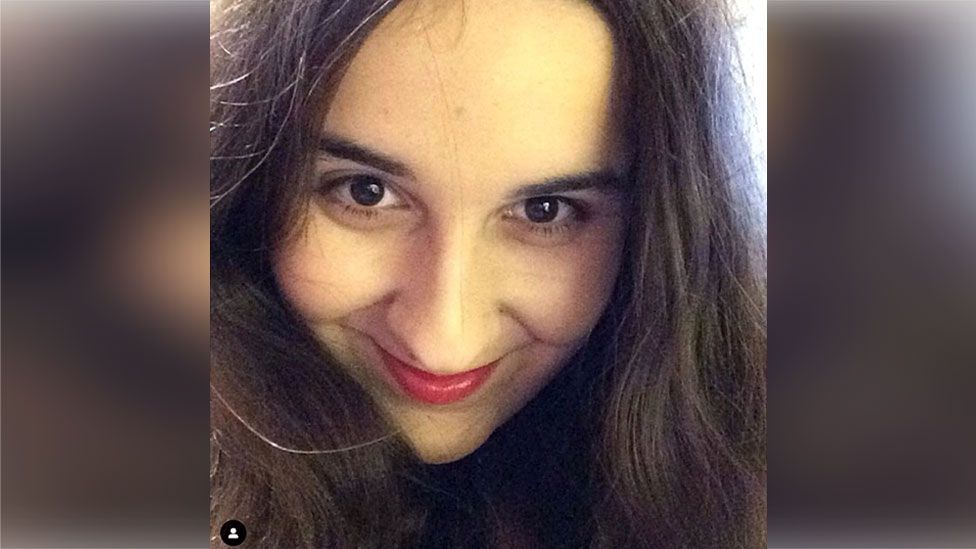
In 2020, a high-profile children's charity was closed down. Just two years earlier, its young founder had died in mysterious circumstances, leaving everyone involved desperate for answers. Only now is the truth becoming clear - a story of medical deception and celebrity obsession, exposed by a group of concerned parents determined to protect the cancer community from imposters.

On 10 August 2015, crowds of fans cheered and waved as two members of pop band One Direction posed for photos outside a fundraising ball at London's Natural History Museum. But inside, the real stars were a group of very ill children - dressed up in gowns and suits, some accompanied by their carers, others midway through chemotherapy.
For Megan and her mother Jean, this "Cinderella Ball" was another chance to raise money for their fast-growing charity, Believe in Magic. Over the past two years they'd granted hundreds of wishes to seriously-ill children, including parties and trips to Disneyland.
The guests also knew that Megan - who was just 20 - had organised the ball while very publicly battling a brain tumour of her own. It's an "incredible privilege" to work with Believe in Magic, One Direction's Louis Tomlinson told attendees. But behind the ball gowns and themed masks there was a secret involving one of the medical profession's most mysterious syndromes.
Megan
Believe in Magic was inspired by Megan's own struggle with illness. After her parents separated when she was very young, Megan lived with her mother Jean, sharing a fairly normal suburban life. But aged 13, Megan was diagnosed with Idiopathic Intracranial Hypertension - a build-up of pressure on the brain.
A couple of years later, Jean told friends Megan had also been diagnosed with a brain tumour. The experience inspired Megan, then 16, to start Believe in Magic, to bring some joy to desperately unwell children.

Despite Jean's regular online posts about Megan's daily cocktail of drugs and frequent hospital visits, the pair worked tirelessly for their charity. Megan, Jean, and their charity became famous for their glitzy parties and support of One Direction.
"It was out of this world," said Lucy Petagine, whose daughter Luna attended several events. "Every single child felt like they were so important and they weren't poorly."
In 2015, Megan was given an award by then-UK Prime Minister David Cameron, who praised her "extraordinary courage".
At the height of Believe in Magic's success, however, Jean announced Megan's brain tumour had worsened, and she needed to raise £120,000 for emergency life-saving treatment in the US. Megan's supporters rushed to help and they reached the target in less than 48 hours.
But one group of concerned parents in the child cancer community didn't think Megan was as ill as she claimed.
Parents turned detectives
When Jo Ashcroft first saw Megan's JustGiving appeal on Facebook in early 2015, it brought back painful memories. After her son was diagnosed with neuroblastoma - a cancer of the nervous system - Jo had raised £250,000 for successful cutting-edge treatment in the US.
Something about Megan's appeal didn't sit right with Jo. It didn't mention any specific doctor or hospital. "I was a bit suspicious," she recalls. "I just wanted to make sure the money was going to the right place."
When Jo spoke to three friends whose children had also been diagnosed with neuroblastoma, they agreed it was unusual. But they advised caution - wrongly accusing someone of lying about a brain tumour was unthinkable.
Gentle questions to Jean and other supporters went unanswered, so Jo went back to running the family business and looking after her three children. Then, a year later, Jo saw Megan and Jean were fundraising again - Jean said Megan was seriously unwell in hospital in America, and needed more money.
Jo and the other concerned parents vowed that this time, they'd uncover the truth. "It became all-consuming," she says. "I don't want people being ripped off, especially not in the cancer community."
She adopted a pseudonym and even pretended to be a journalist writing a story about Megan - although again got nowhere. But one of the group used their computer skills to work out where Jean and Megan were opening their emails. It wasn't a hospital. It was a luxury hotel at Disney World in Orlando, Florida.
Private investigator
A few weeks later, Megan and her mother Jean disembarked the Queen Mary II ocean liner at Southampton docks.
According to Jean, they were lucky to be back at all. Throughout the summer, she'd asked supporters to help her raise money - explaining Megan had "16 sources of infections" and severe sepsis. At one point, she said, doctors gave Megan a 10% chance of surviving the next seven days.
Thanks to their hard work though, she said, Megan's condition had stabilised and the specialists in Florida had allowed her to return home, armed with five cases of medical kit and a "huge oxygen concentrator".
But waiting at the cruise terminal as they arrived was a private investigator. Jo was so determined to discover the truth, she paid £1,000 for him to take photos of the pair.
The photos showed Megan and Jean walking off the ship like a couple of happy tourists. There were no oxygen tanks. According to the investigator, they were laughing and chatting as they strolled straight past the porters, pushing luggage trollies piled high with cases.
We asked Jean via email why she and Megan were staying at a Disney resort at a time they claimed Megan was seriously ill in a US hospital. She did not respond, although said, "it is very easy to get sucked into social media lies."
Armed with this new evidence, the concerned parents contacted every authority they could think of, but it seemed like nobody would intervene. So they decided to set up a Facebook group called: "The Truth About Meg And Jean" - where they shared their discoveries. But most of Meg and Jean's supporters refused to believe it. Many had seen Megan's poor health first-hand - the intravenous tubes in her arm and medication.
Jo was bombarded with hateful messages, but she was confident she'd done the right thing. Then, in early 2018, Jo's phone buzzed. Megan was dead.
The inquest
Megan had died on 28 March 2018 at the National Hospital for Neurology and Neurosurgery in London.
"All I kept saying is, 'Darling, if you want to go, please go and be happy,'" wrote her mother on Facebook.
Jo was stunned. "It wasn't supposed to end like this," she says.
For Megan's supporters, there was little doubt who was to blame. "She was hounded to death," wrote one on Facebook. But Jo remained convinced that Megan didn't have a brain tumour.



When the cause of someone's death is unclear, a coroner investigates what has happened. In late 2018, an inquest into Megan's death took place.
In early 2022, we were granted permission to attend the coroner's court and listen to a recording of what had been heard at the inquest four years earlier.
For two hours, we listened to doctors explain what they had seen. Megan had certainly been unwell - over the years she had suffered from several conditions, but all in theory manageable.
But the inquest dealt a shocking blow to the claims Megan and Jean had made over the years. Jo was right - there was no mention of a tumour. According to the forensic pathologist, her brain had been "morphologically normal".
Several doctors however listed other worrying details. One had concerns about the validity of Megan's medical history. Another noted Megan's "opiate-seeking" behaviour. There was an attempt to obtain morphine using a forged prescription. Megan repeatedly missed medical appointments and hopped from doctor to doctor.
It wasn't a tumour that killed Megan, but an abnormality of the rhythm of the heart - acute cardiac arrhythmia - due to fatty liver disease, likely related to Megan's high body mass index.
Jean did not want to be interviewed, but told us via email that Megan did have a pituitary microadenoma - a type of non-cancerous brain tumour which, while not typically life-threatening, can be harmful.
The sisters
Megan had four older half-siblings, Jean's children from a previous marriage. "I was 12 when Meg was born," says Megan's half-sister Kate, whose name we've changed. "I just adored her."
According to Kate, Megan and Jean had a strange relationship with illness. If someone they knew was unwell, sooner or later they'd hear Megan had the same.
Kate remembers family dinners laced with danger. Jean piled tins precariously on top of empty food cupboards which would roll off and hit the dining table directly below - so often that it was covered in dents and divots.
"Jean wanted one of us to have an accident," believes Kate. "The whole thrill of it. The attention."
For Megan's other half-sister Rachel - whose name we've also changed - it's even more personal. When she was nine, she was affected by a rash that caused kidney problems. Over the years, her condition deteriorated, and she needed a transplant.
After Megan died, Rachel had vivid memories of being fed cups and cups of salty Bovril as a child - even though high salt content is something you should avoid with kidney problems.
She now wonders: "Only I got Bovril. So, was it a deliberate thing?"
Munchausen
In 1951, a physician called Richard Asher published a ground-breaking paper in the medical journal The Lancet. While running a mental observation unit, he noticed a small but consistent number of patients complaining of various symptoms, but on closer inspection were perfectly healthy.
He called it "Munchausen syndrome". It differs from hypochondria. Hypochondriacs exaggerate and panic, but really do think they're ill. Munchausen patients know they aren't, but seek treatment anyway.
Prof Marc Feldman is one of the world's most renowned experts on factitious disorders like Munchausen syndrome. He also studies Munchausen by proxy, now known in the UK as Fabricated or Induced Illness (FII), a rare form of child abuse where a parent or carer exaggerates or deliberately causes symptoms of illness in the child. Because it involves deception, he thinks the condition is more widespread than people realise.
Prof Feldman never met Megan or Jean, and hasn't seen Megan's medical records. But based on our detailed account of what we've discovered, he says Megan's case "screams" of FII.
Megan was 23 when she died, so legally an adult. But she was still a child when the charity was started. We will never know for sure who was driving this behaviour, or what Megan really thought of it all.
Feldman explains the line between child and consenting adult might be clear in legal terms - but not always in practice: "If you learn throughout your whole lifetime that there are certain things you're allowed to say and think… you become cooperative."
One Direction
People fake illness - either in themselves or others - for lots of reasons. Some do it for money. Sometimes it's a wish to be listened to or looked after. For parents, it can be a desire to be the heroic caregiver. Sometimes it's a mixture.
For Megan and Jean, one motive might have been to run a much-loved charity - Megan being seen as having a life-threatening brain tumour herself may have helped Believe in Magic reach more children. At a Believe in Magic event at the Tower of London, a former friend recalls Jean observing: "The sicker Meg is, the more attention we get, the more money we make."

More recently, Prof Feldman has spotted a new trend - people faking conditions to meet celebrities. A serious condition, he says, "allows someone to emerge out of the pack of people who are infatuated with this celebrity".
Megan's sister Kate thinks that the brain tumour and Believe in Magic were partly driven by a desire to rub shoulders with celebrities. After repeatedly tweeting members of One Direction, the band became supporters of the charity, allowing Megan and Jean to meet the stars.
The Kingston review
In 2017 - a year before Megan died - the Charity Commission opened an investigation into Believe in Magic, following several tip-offs from Jo.
They found more than £100,000 was unaccounted for, and that charity money had been transferred into Jean's personal bank account. In 2020, the charity was dissolved and Jean agreed not to be a trustee or in a senior management position in any charity for five years.
Just a few months after Believe in Magic was shut down, Jean disappeared from public view. She moved to France for a while, before returning to the UK last year.
But that was not the end of the story. In November 2022, Kingston Council - where Megan had been living - published a "Safeguarding Adult Review" into what had happened. These are rare investigations into cases where people may have been let down by the authorities. As is standard, the names are all changed, but because of how much we've learned about the case, we have no doubt it's about Megan.
It concluded: "Despite there being no formal diagnosis of FII (Fabricated or Induced Illness) in this case, the presentation and coroner's conclusion lead all involved to think it was likely to have been FII."
This review does not suggest that FII caused Megan's death. It cites the cause of death given in the coroner's inquest: cardiac arrhythmia, due to fatty liver disease. But it nevertheless highlights how the FII in Megan's case could have been missed.
FII is recognised as something that can happen to children, because parents attend their medical appointments, and are responsible for giving consent for treatments. There's far less understanding about how it can happen to vulnerable adults too. Because Megan was an adult for much of this story, doctors and social workers lacked the training and tools to identify her situation as a case of FII while she was still alive.
We asked Jean to respond to the findings of the Kingston review. She did not directly address what was found, but did say: "I loved and cared for my daughter. Suggesting I might have harmed her in any way at all is absolutely sickening."
It's too late for Megan, but according to FII expert Dr Danya Glaser, this review could change how similar cases are understood and managed.
"The Kingston review is extremely significant," she explained. "It brings to people's attention the fact that FII can continue into adulthood."
A few days after the review was published, we visited Kate and Rachel to tell them about it - even Megan's sisters had no idea it had taken place. Neither have spoken to their mother for several years. When they asked her difficult questions about Megan and Believe in Magic, Jean cut them out of her life, they say.
"It's a good thing to have. It's all there in black and white," says Rachel, reading the report. "We thought it had all been forgotten." She thinks back to her kidney transplant and wonders what this report means for her too.
They both hope it might help prevent something similar happening again.
"Megan was a victim," says Kate. "She was groomed for this."
Related Topics
"celeb" - Google News
May 08, 2023 at 07:19AM
https://ift.tt/U6LoIVs
Her illness fooled celebs. The truth may be even darker - BBC
"celeb" - Google News
https://ift.tt/Vi1eYDf
Bagikan Berita Ini














0 Response to "Her illness fooled celebs. The truth may be even darker - BBC"
Post a Comment